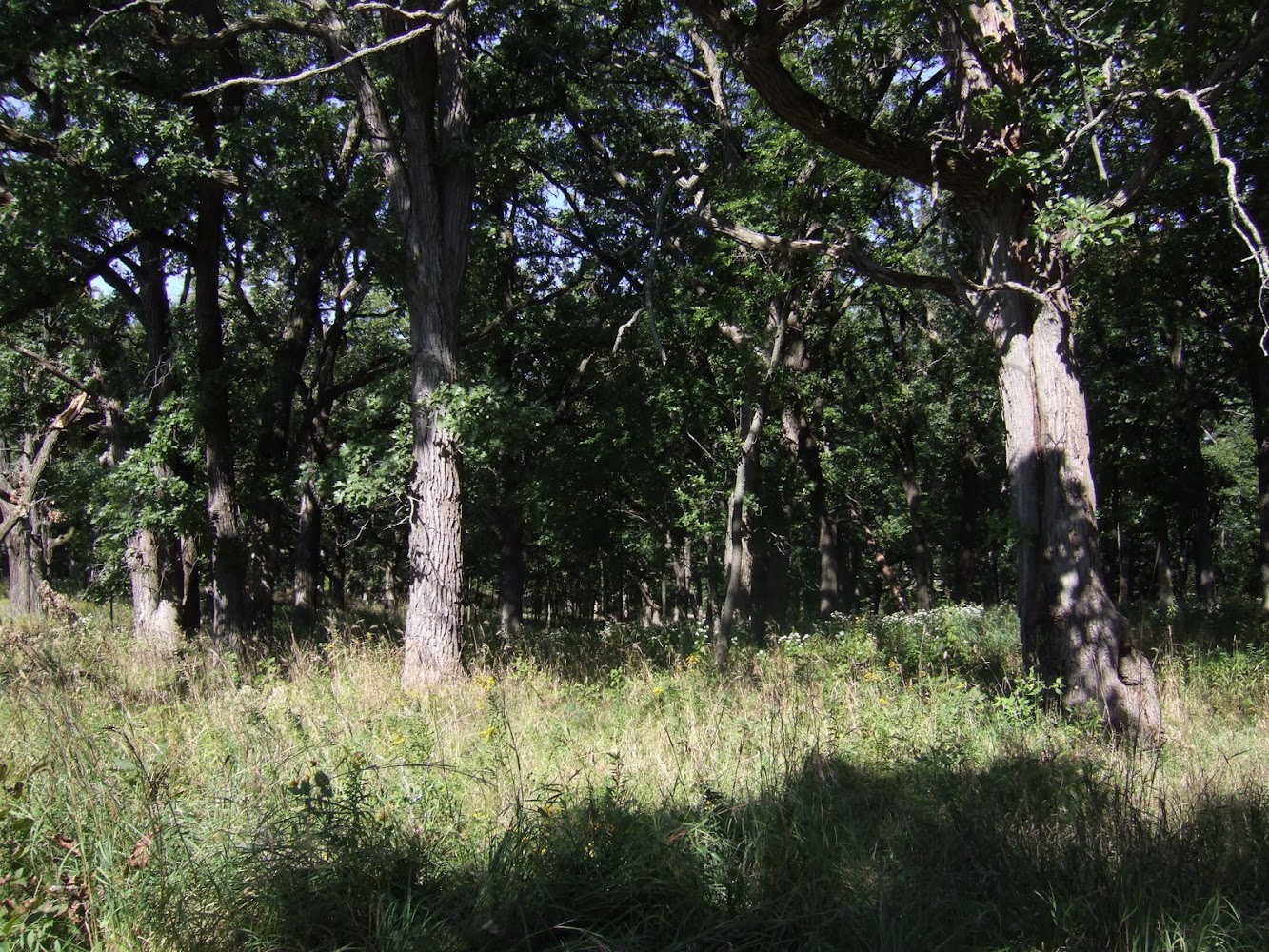
When I was in college, I studied Jean-Paul Sartre's "Pierre is Not in the Cafe" example, which poses the existential conundrum of how can one see the absence of something. I was reminded of this when walking through the restored savanna at the local forest preserve. The photo above shows what a wooded area in Northern Illinois should look like. There is something missing in the picture above, which allows a view into the shadows between the trees. That something is buckthorn, the absence of which also allows the growth of native wildflowers, such as Eurybia macrophyllus f/n/a Aster macrophyllus and White Snakeroot (Ageratina altissima a/k/a Eupatorium rugosum), the white area in the right background. This wooded area is burned regularly, usually in the Autumn, to destroyed alien invaders and restore the soil. Compare that with this photo.

This is an area that has not been restored. The spindly stuff with the green leaves is the buckthorn.
Here's another example of spot what is missing:

This photo shows a tree with a root flare surrounded by a mulched area with Hostas.
Okay, here's a hint:

Yes, it's the ubiquitous mulch and soil volcano. Too many people (and landscape companies and units of local government) have forgotten what a properly planted tree looks like. Does anyone actually find the example on the left attractive? It certainly isn't healthy for the tree, which is why I am happy to see this:

yes, the village in which I live (which shall remain nameless) has actually mulched buckthorn. Well, that's one way to kill it.